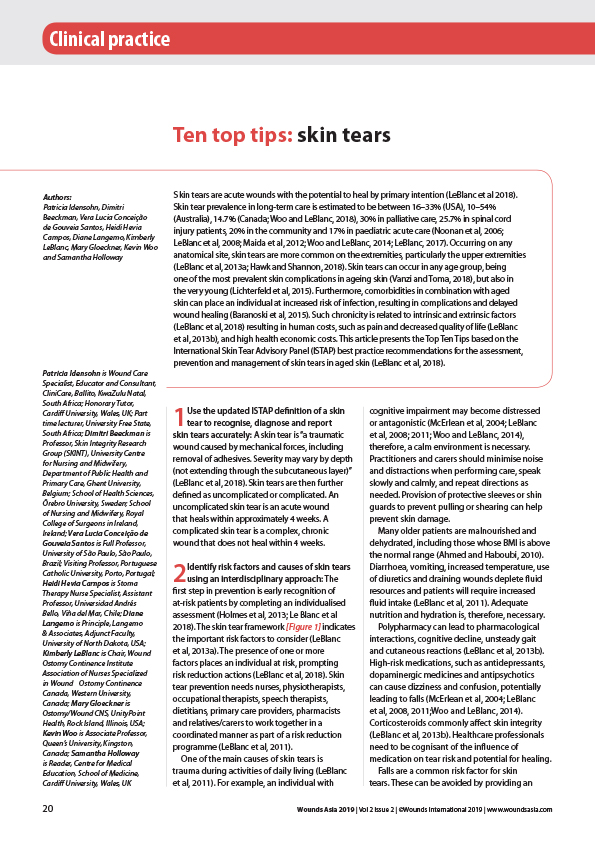Skin tears are acute wounds with the potential to heal by primary intention (LeBlanc et al 2018). Skin tear prevalence in long-term care is estimated to be between 16–33% (USA), 10–54% (Australia), 14.7% (Canada; Woo and LeBlanc, 2018), 30% in palliative care, 25.7% in spinal cord injury patients, 20% in the community and 17% in paediatric acute care (Noonan et al, 2006; LeBlanc et al, 2008; Maida et al, 2012; Woo and LeBlanc, 2014; LeBlanc, 2017). Occurring on any anatomical site, skin tears are more common on the extremities, particularly the upper extremities (LeBlanc et al, 2013a; Hawk and Shannon, 2018). Skin tears can occur in any age group, being one of the most prevalent skin complications in ageing skin (Vanzi and Toma, 2018), but also in the very young (Lichterfeld et al, 2015). Furthermore, comorbidities in combination with aged skin can place an individual at increased risk of infection, resulting in complications and delayed wound healing (Baranoski et al, 2015). Such chronicity is related to intrinsic and extrinsic factors (LeBlanc et al, 2018) resulting in human costs, such as pain and decreased quality of life (LeBlanc et al, 2013b), and high health economic costs. This article presents the Top Ten Tips based on the International Skin Tear Advisory Panel (ISTAP) best practice recommendations for the assessment, prevention and management of skin tears in aged skin (LeBlanc et al, 2018).








